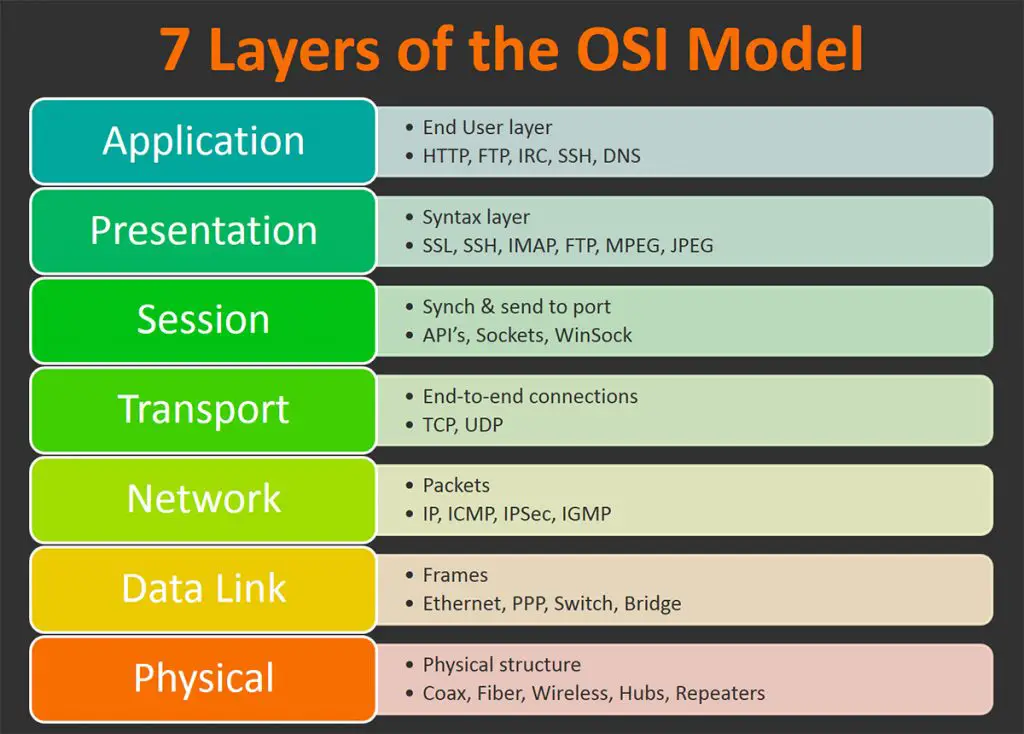What is OSI Model, How Many Layers in OSI Model, What is osi model in computer network, Advantages of OSI Model, Disadvantages of OSI Model
You will know about networking, with the help of which we can connect with people and transfer data from one system to another. OSI Model stands for Open System Inter Connection Model. With the help of the OSI model, we can understand how a data is transmitted from one network to another and what happens to the data in between. The OSI model describes how information from a software application in one computer moves from a physical medium to a software application in another computer.
IT professionals use the OSI model to trace how data is sent or received over a network. This model deals with data transmission in a series of seven layers, each of which is responsible for performing specific tasks related to sending and receiving data. So if you also want to get complete information about OSI Layer, then definitely read this post of ours from beginning to end.
What is OSI Model ?
The OSI model was created in 1984, it is not of any use to us, but the Model Transmission Control Protocol and Internet Protocol (TCP/TP) created by it is for our use. With the help of OSI Model, we can understand how a data is transferred from one network to another and what happens with the data in between.
We can understand with the help of OSI model, whatever process happens in between reaching a data from one place to another. Each layer of it does a different job, so that we know very well which layer the data goes to and what is the process with the data before it comes to us.
The OSI model is mainly made up of seven layers (7 layers). Each of these layers has different functions. This layer is with both the sender of the data and the receiver of the data. This layer runs from top to bottom, with the first layer at the bottom and the last layer at the top.
OSI Model Full Form
The full name of the OSI model is “Open System Interconnection”.
How many layers are there in OSI Model?
There are mainly 7 layers in the OSI model. All the layers of this model do not depend on each other, but do transfer data with each other. All these layers have their different functions, so that data can be transferred from one place to another quickly and easily, whose names are as follows.
Physical Layer
This layer comes first in the OSI model, it converts digital signals into electrical signals and is responsible for physical and electrical connections. In this, the work of layout and topology of the network is done, it is also called Bit Unit.
Data Link Layer
The data received in this layer is checked by decode and encoded and it is confirmed that the error does not occur in the data, it is also called Frame Unit. This layer is divided into two parts:
- Media Access Control
- Logical Link Control
Network Layer
The data of this layer is like a packet, which is carried by the network layer from one place to another, it is also called packet unit. Its function is to provide I.P Address, it uses Switching and Routing techniques to do its work.
Transport Layer
It is the responsibility of this layer to make the data reach its place by all means without any error, it is also called segment unit.
Session Layer
Its main function is that whenever you connect with one or two network devices, the Session Layer establishes a network for you, maintains that network while you are working and terminates that network when your work is over. Is.
Presentation Layer
This layer is connected to the operating system, its main function is to present the data. Here the format in which the data comes, it transmits it to the viewer of this data in the same format, hence it is also called Translation Layer.
Application Layer
This layer of the OSI model is closest to the user, its main function is to interface our information with all the layers. This layer controls how your information or application is to reach the network.

Advantages of OSI Model
- The OSI model is very flexible, as it can use any protocol.
- All the layers of the OSI model are different, even if one layer is changed, it has no effect on any other layer.
- This model provides both types of services, Connection Oriented as well as Connection Less.
- The OSI model is a Generic Model, also known as the Standard Model.
- The OSI model is very secure.
Disadvantages of OSI Model
- Sometimes it is difficult to implement the new protocol in the OSI model.
- It does not define any particular protocol separately.
- All its layers are interdependent among themselves.
- Sometimes the problem of duplication of services is created between the layers in the OSI model.
Features of the OSI Model
- The OSI Model is divided into two layers – Upper Layer (upper layers) and Lower Layer (lower layers).
- Only mainly deals with the problems related to the application through Upper Layer Software. The application layer is closest to the user.
- The lower layer handles the issues related to data transport through hardware and software. The lower layers are the physical layer, which holds the data or information in the physical medium.
Conclusion
We hope that you have got all the information related to OSI Model in our today’s article, as well as you must have also come to know what is OSI Model Layer and OSI Model Full Form. Hope that now you have understood the complete information related to the OSI model, if you liked our post, then do share it with your friends.

